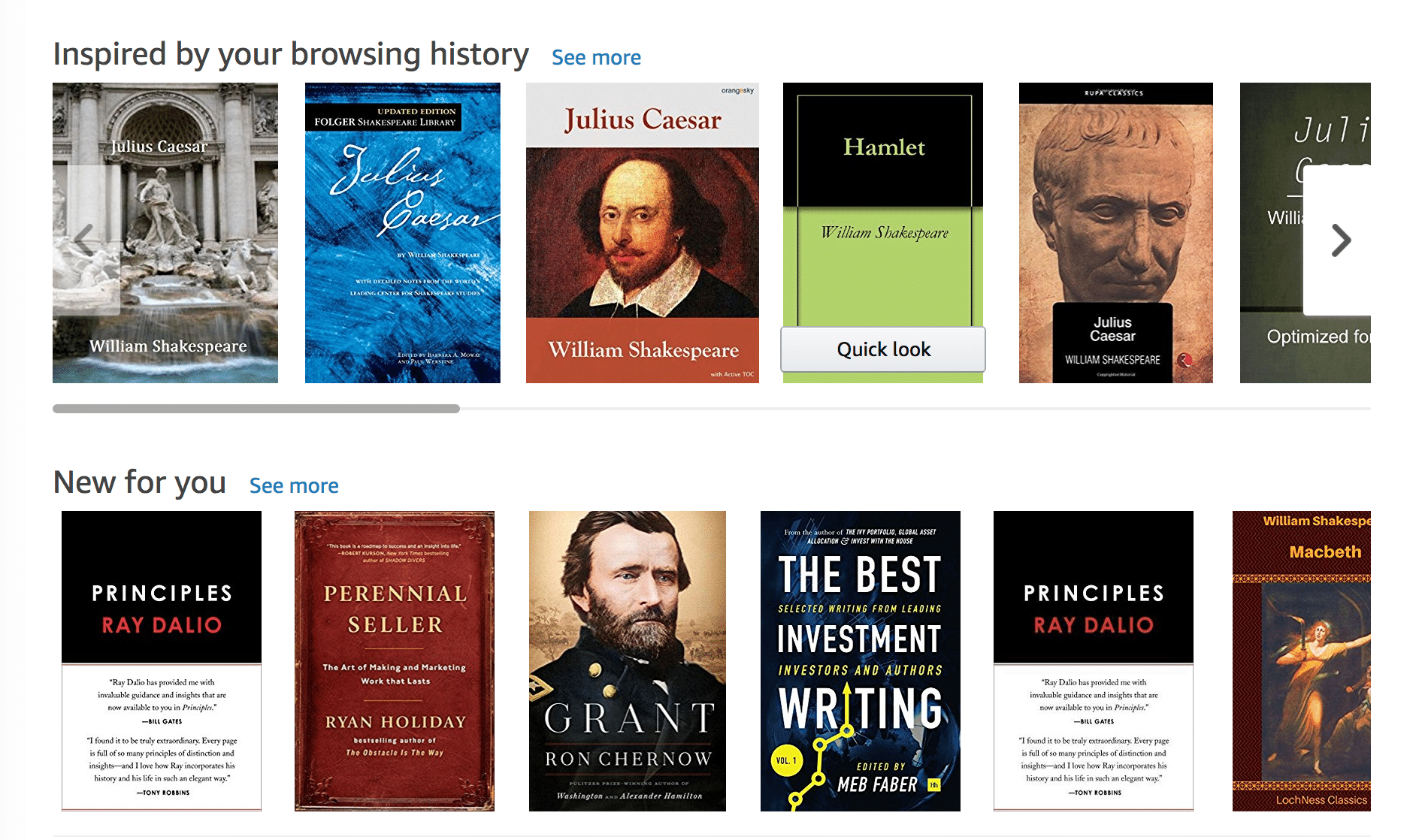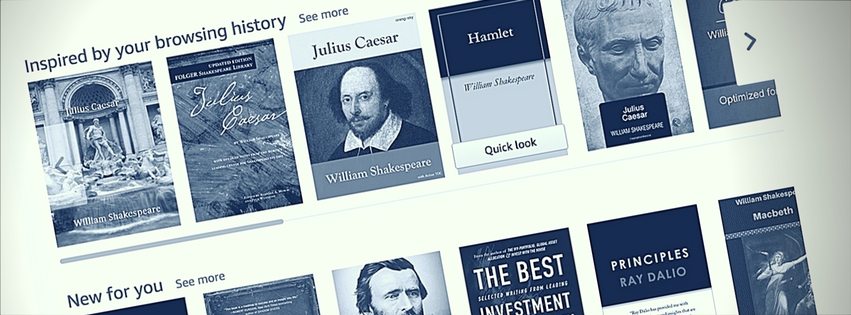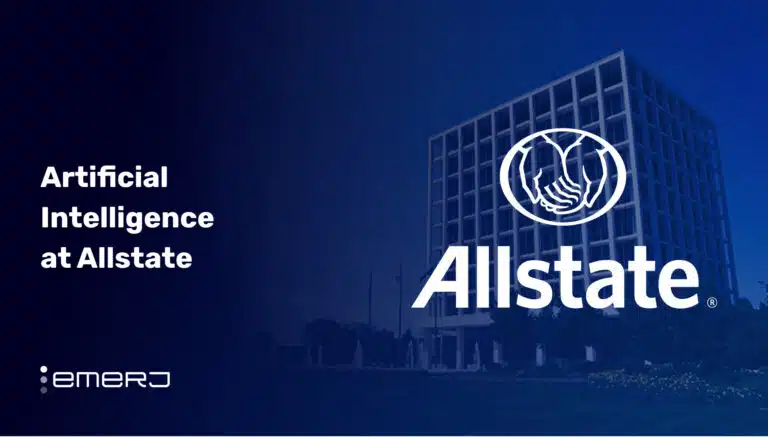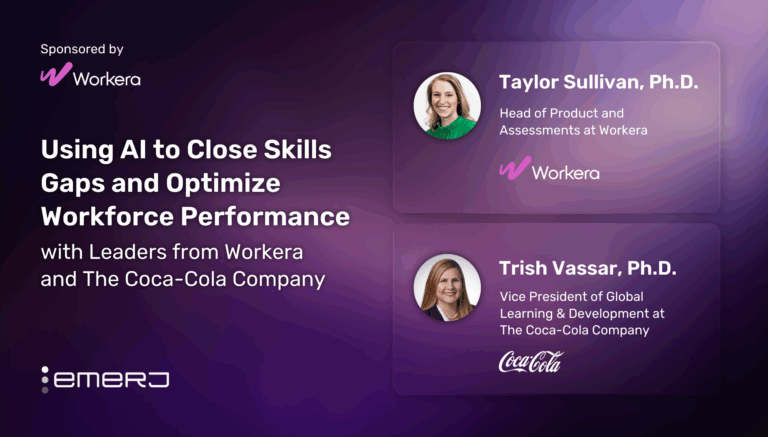An increasing number of online companies are utilizing recommendation systems to increase user interaction and enrich shopping potential. Use cases of recommendation systems have been expanding rapidly across many aspects of eCommerce and online media over the last 4-5 years, and we expect this trend to continue.
Recommendation systems (often called “recommendation engines”) have the potential to change the way websites communicate with users and to allow companies to maximize their ROI based on the information they can gather on each customer’s preferences and purchases.
This article breaks down the insights that non-technical managers and execs should understand about the business applications of recommendation systems, including:
- Common benefits of recommendation systems (with examples)
- Basic terminology / approaches / algorithms of recommendation engines
- Current recommendation engine use-cases at Amazon, Netflex, BestBuy, and others
- Potential future trends and improvements to today’s recommendation engines
We’ll start off with some of the major benefits that recommendation systems offer businesses:

Potential Benefits of Recommendation Engines
Below are some of the various potential benefits of recommendation systems in business, and the companies that use them:
- “Improving with use” (retention): One of the core potential benefits of recommendation systems is their ability to continuously calibrate to the preferences of the user. This makes products that become more and more “sticky” in their customer retention as time goes on:
- You’re much less likely to switch to a Netflix competitor when Netflix has such a wonderful sense of which movies and shows you might want to watch next (i.e. they “know you so well”). Because most of Netflix’s revenues come from a fixed-rate recurring billing model subscription, the company’s biggest ROI “win” with recommendation systems is retention.
- Improving cart value: A company with an inventory of thousands and thousands of items would be hard pressed to hard-code product suggestions for all of it’s products, and it’s obvious that such static suggestions would quickly be out-of-date or irrelevant for many customers. By using various means of “filtering”, eCommerce giants can find opportune times to suggest (on their site, via email, or though other means) new products that you’re likely to buy.
- Amazon’s quick delivery and emphasis on customer service has earned them millions of customers. Recommendation engines play a role not only in helping customers find more of what they need (and see Amazon as an authority), but these systems also improve cart value. If Amazon doesn’t have to pay much more for shipping to send you two or three times as many products, their profit margins improve.
- Improved engagement and delight: Sometimes seeing an ROI doesn’t involve explicitly asking for payment. Many companies use these systems to simply encourage engagement and activity on their product or platform.
- YouTube has subscription options, but the majority of the firm’s revenues are driven through advertisements placed across its wide array of video properties. The company makes more money when users come back time and time again. YouTube doesn’t optimize for short-term view length, as this might encourage pushy or flashy tactics that wouldn’t genuinely delight users. Instead, the service aims to encourage long-term use, because advertising views is the ROI that these systems serve at YouTube. Facebook is another obvious example of a similar application of recommendation engines.
It’s also important to note that recommendation systems (a) are likely only to be a fit for companies with enough data and in-house AI talent to use them well, and that (b) many businesses and business models may be better off not using recommendation systems as they are not guaranteed to be a higher yield approach than the alternatives.
That being said, there are some sectors (most notably digital media, eCommerce) where such systems seem to be borderline inevitable.
Recommendation Engine / Recommendation System Fundamental Terms
Recommendation systems are important and valuable tools for companies like Amazon and Netflix, who are both known for their personalized customer experiences. Each of these companies collects and analyzes demographic data from customers and adds it to information from previous purchases, product ratings, and user behavior.
These details are then used to predict how customers will rate sets of related products, or how likely a customer is to buy an additional product.
Before diving into specific recommendation engine applications from well-known retailers and online services, I think it’s important for us to explain the different types of recommendation systems. We’ve linked to further reading in case some of you would like to dive further into the science behind each of these approaches:
- Collaborative filtering: This type of recommendation system makes predictions of what might interest a person based on the taste of many other users. It assumes that if person X likes Snickers, and person Y likes Snickers and Milky Way, then person X might like Milky Way as well.
- Content-based filtering: This type of recommendation system focuses on the products themselves and recommends other products that have similar attributes. Content-based filtering relies on the characteristics of the products themselves, so it doesn’t rely on other users to interact with the products before making a recommendation.
- Demographic based recommender system: This type of recommendation system categorizes users based on a set of demographic classes. This algorithm requires market research data to fully implement. The main benefit is that it doesn’t need history of user ratings.
- Utility-based recommender system: This type of system makes recommendations based on a computation of its usefulness for each individual user. This relies on each industry’s ability to decide on a user-specific utility function. The main advantage of this system is it can make recommendation that are unrelated product’s attributes, such as availability and vendor reliability.
- Knowledge based Recommender System: This type of system makes suggestions based on information relating to each user’s preferences and needs. Using function knowledge it can draw connections between a customer’s need and a suitable product.
- Hybrid filtering: This type of recommendation system can implement a combination fo any two of the above systems.
(Readers with a deeper interest in understanding the applications of recommendation engines may want to listen to our full recommendation engine interview with AI researcher Raefer Gabriel.)
Return on investment (ROI) ultimately has to boil down to (a) saving more money, or (b) making more money. Businesses don’t invest time and resources into recommendation engines to be “hip” (we’ve warned companies against creating “test applications” of AI that aren’t directly tied to value). Smart companies who leverage these systems do so to improve their bottom line.
However, “improving the bottom line” can be accomplished through a variety of means, and each company will approach the problem differently. Recommendation engines don’t serve the same purpose across companies, and it’s important for business leaders to get a sense of what different kinds of goals a recommendation engine can aim to accomplish.
Real World Applications Today
Now that we’ve covered some of the basic benefits and terminology, we’ll explore applications of recommendation engines across large and well-known companies, beginning with Amazon.
1 – Amazon

Amazon has single-handedly put a spotlight on the retail value of AI, and recommendations are part of what put the company on the map (in addition to their robotics initiatives, and AWS).
Amazon.com uses recommendations as a targeted marketing tool throughout its website. When a customer clicks on the “your recommendations” the link leads to another page where recommendations may be filtered even further by subject area, product types, and ratings of previous products and purchases. The customer can even see why a particular product has been recommended.
“At Amazon.com, we use recommendation algorithms to personalize the online store for each customer. The store radically changes based on customer interests, showing programming titles to a software engineer and baby toys to a new mother,” explain Greg Linden, Brent Smith, and Jeremy York in their paper Amazon.com Recommendations: Item-to-Item Collaborative Filtering.
In this instance, collaborative filtering doesn’t just match each use to similar customers. The item-to-item connects each user’s purchase to similar items and compiles a recommendation list from them. For example, if you’re enthusiastic about the latest technology, you may find your Amazon web page suggests the latest device and gadgets, if cooking is your thing, you’re sure to find plenty of recommendations for recipe books and cookware.
According to McKinsey & Company, 35% of Amazon.com’s revenue is generated by its recommendation engine.
2 – Netflix
According to a paper written by Netflix executives Carlos A. Gomez-Uribe and Neil Hunt, the video streaming service’s AI recommendation system saves the company around $1 billion each year. This allows them to invest more money on new content which viewers will continue to view, giving them a good ROI.
“We have discovered through the years that there is tremendous value to our subscribers in incorporating recommendations to personalize as much of Netflix as possible,” say by Xavier Amatriain and Justin Basilico (Personalization Science and Engineering) in their Netflix Tech Blog.
Here’s how Netflix explains their recommendation engine on their own YouTube channel:
Netflix uses RS personalized diversity to generate Top Ten recommendations for user households, so that it can offer videos that each member of the household may be interested in. The company also focuses on awareness and promoting trust to help develop its personalized approach. Netflix implements these strategies by explaining why it makes video recommendation and encouraging members to give feedback, so no opportunities to personalize are missed.
According to McKinsey, 75 percent of what users watch on Netflix come from product recommendations. We spoke openly about the general web trend of “personalization” and recommendation in our AI podcast with Adam Spector of LiftIgniter, which might be worth a listen for executives considering how recommendations might be used in their own business.
3 – Spotify
In the presentation below, Spotify’s Christopher Johnson (who was previously working on a PhD in machine learning at UT Austin) explains the basics of Spotify’s music recommendation approach:
Possibly one of Spotify’s most innovative uses of AI and recommendation systems is their popular Discover Weekly playlist. Known as Release Radar, this algorithmically powered tool updates personal playlists on a weekly basis so that users won’t miss newly released music by artists they like.
“With the huge amount of new music released every week, it can be difficult to keep up with the latest tracks,” Spotify’s Matt Ogle, who leads the development of Discover Weekly, said in a statement. “With Release Radar, we wanted to create the simplest way for you to find all the newly released music that matters the most to you, in one playlist.”
Discover Weekly works by looking at the 2 billion plus playlist created by users, each based on music fans’ individual tastes. Spotify then collates this information with the company’s own playlists and fills in the blanks by comparing a user’s listening habits to those of users with similar tastes. The approach also uses collaborative filtering in combination with deep learning to detect patterns within huge amount of data to improve weekly selections.
The new recommendation system has helped Spotify increase its number of monthly users from 75 million to 100 million at a time, in spite of competition from rival streaming service Apple Music.
4 – Best Buy
Another company utilizing RS to increase revenues and improve customer experience is Best Buy. The company’s strategy is based on query search and click data. Since 2015, Best Buy has used the information in an attempt to predict what customers are interested in. The query-based and item-to-item system creates cluster models that allow the company to make customer recommendations.
“We’ve had a very material transformation of our marketing efforts in the last three years, with the headline being, of course, more personalized. We went from analog and mass communication to much more targeted, relevant, personalized and digital communications,” said CEO Hubert Joly in an interview with Diginomica.
Best Buy has been using its recommendation system for eCommerce since 2015. The system works by predicting what a customer is interested in based on their individual browsing and purchase data. President of Global E-Commerce Scott Durchslag said that he wants Best Buy to become “the Netflix of consumer electronics.”
In 2016, CNBC reported a 23.7 percent growth in online sales for Best Buy, which marked a second straight quarter of almost 24 percent increase. The growth was attributes in part to the company’s improved recommendation system.
5 – YouTube
Fortunately for us, YouTube has a series of “Help” videos that answer basic user questions about YouTube and the technology that supports it. Below is a three minute explanation of how YouTube provides its video recommendations:
The YouTube online video community uses RS to create personalized recommendations so users can quickly and easily find videos that are relevant to their interests. Because of the value of keeping users engages, YouTube strives to keep the recommendations updated on a regular basis, to reflect each user’s activity on the site and to simultaneously highlight the wide range of available content.
“We believe that for every human being on earth, there’s 100 hours of YouTube that they would love to watch,” Christos Goodrow, YouTube’s director of engineering for search and discovery told Business Insider. “And the content is already there. We have billions of videos. So we start with that premise and then it’s our job to help viewers to find the videos that they would enjoy watching.”
The RS is driven by the Google Brain deep learning artificial intelligence project and is comprised of two neural networks. The first collects and collates information on users’ watch history and uses collaborative filtering to select hundreds of videos. This process, known as candidate generation, uses feedback from users to train the model. The second neural network ranks the selected videos in order to make recommendations to users.
According to YouTube after implementation of the RS for more than a year, it has been successful in terms of their stated goals, with recommendations accounting for around 60 percent of video clicks from the homepage.
Concluding Thoughts on Recommendation / Personalization in Business
Companies across many different areas of enterprise are beginning to implement recommendation systems in an attempt to enhance their customer’s online purchasing experience, increase sales and retain customers. Business owners are recognizing potential in the fact that recommendation systems allow the collection of a huge amount of information relating to user’s behavior and their transactions within an enterprise. This information can then be systematically stored within user profiles to be used for future interactions.
As well as improving customer experience, the information gathered from a recommendation system can also be used as an ad targeting tool. By integrating a recommendation system with ad exchanges, a business may have the ability to target other website users with products they have liked on the company’s site.
Revenues can be increased using simple strategies such as:
- Adding matching product recommendations to your purchase confirmation
- Collecting information about abandoned shopping carts
- Sharing “what customers are buying now”
- Sharing other customer’s views and purchases
- Making personalized recommendations
Another way to make good use of the wealth of information garnered from recommendation systems is to trigger emails based on online interactions. For example, a business could send an email to a user who viewed five pages of laptops with a discount coupon or code for a selection of those products. Businesses can also use reverse triggers to send emails targeted at products that the user has not yet viewed.
As more and more products become available online, recommendation engines are crucial to the future of e-commerce. Not only because they help increase customer sales and interactions, but also because they will continue to help companies weed out their inventory so they can supply customers with products they really like.
The next generation of recommendation systems may include the following improvements:
- More relevant recommendations: By digging deeper into customers’ interests and preferences, recommendation systems will be able to present users with more-relevant, predictive recommendations.
- Incorporate item profitability: Instead of having recommendation based solely on a customer’s browsing history and past purchases, this would allow businesses to control how much a profit-based recommendation differs from the traditional recommendation and to set a balance so that customer trust would not be compromised.
- Increase product reach: Each retailer has an individual catalogue of products, improved recommendation systems would be able to access a broader range of merchandise in order to include new or niche items in shoppers’ recommendations.
- Reach shoppers through multiple channels: Next generation recommendation systems should be able to reach customers across a range of channels including email, social media, on an off-site shopping widgets, mobile apps, and the retail customer service centers.
According to a press release from IDC, worldwide spending on cognitive and AI systems is predicted to reach $12.5 billion in 2017 (we cover additional projections in our “AI Market Size” article). The largest areas of spending ($4.5 billion) will be cognitive applications; which include systems which are able to make recommendations or predictions.
Stay in touch with our marketing category (or our newsletter, in the footer of this page) to read more of our updates about cutting-edge AI marketing applications.
Image credit: Amazon





















